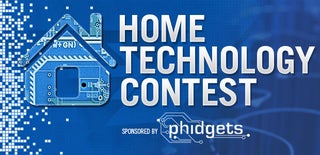Introduction: LED Multimedia Projector
Last year I saw the instructable of newtonn2 about his DIY projector, this intrigued me to build my own projector. While I was searching for all the parts on his list, I had the luck to find a cheap second hand projector with a broken lamp in a town nearby.
Since I already had bought the driver and lamp and found a projector with only a defective bulb, I thought “Why would I scrap a decent projector with probably a better resolution and more inputs etc..?” So I decided to give it a try and convert my projector into a LED projector, if it would fail I would still have the focussing lens to build my own DIY projector.
UPDATE: I entered my instructable in the EPILOG CHALLENGE VI contest, if you like it, please vote for me. Thank you.
Step 1: Parts and Tools You Need, Total Cost
Read the whole instructable before purchasing something.
Parts you need:
2nd hand projector: 15€ (20$)
LED 30W, Cold white 6500k, 2500lumen: 15€ (20$)
LED driver 30W: 8€ (10,75$)
Lens: 2,8€ (3,8$)
Reflector: 1€ (1,3$)
Heat sink: 0€ recycled from scrapped computer
Thermal heat paste: 1,5€ (2$)
Solder: you don’t need much of it 0€
Tape: you don’t need much of it 0€
Aluminum tape: you don’t need much of it 0€
Total cost: around 45€ or 60$
Tools you might need:
Soldering iron
Knife
Screwdrivers
Caliper or meter
Dremel (for trimming excessive plastics)
Don't buy impulsive!
Think twice before ordering something, I ordered all of my parts in Asia, because I live in Europe, I made sure that every order stayed under 22€. If your order would cost more you will have to pay import duty when it comes from outside the EU. Make sure you know what the import rules are in your country.
My parts came from Dealextreme but you might as well find them on Ebay, dealextreme has a free shipment policy, don’t get caught on Ebay, always watch for free shipment and the condition of the item (new or used) on Ebay.
Test the components you bought
While testing I noticed that only 24 of the 30 SMD LED's inside my high power LED where working, so I had basicly only 24W instead of 30W. After contacting Dx I received a new LED.
Notes:
I sold a component that I didn’t needed anymore for 30 euro or 40 dollar, so my project only costed me about 15 euro or 20 dollar.
Best thing to do is to buy a projector before the other components, so you can tweak the needed components to the internal dimensions.
I used a 30W LED and driver, but I recommend you to use a 50W or even an 100W LED. 30W is enough power to watch a movie (in dusk and with lights off), but I think that 50W or 100W would give a much better result, price won’t be that different.
Make sure that your driver and LED have the same voltage and current!
Step 2: Disassemble the Housing and Take a Look Inside
Before disassembling unplug the projector!! You are working with electricity so think twice!
Start disassembling the housing, remind to take a lot of pictures which tell you where the wires, connectors and which screw belongs here or there.
The main components you will see are: lamp ballast, circuitboard, lamp, lens.
Think INSIDE the box
Meaning try to keep everything inside the original housing of the projector, I have seen some simular projects like mine but with the driver mounted on the exteriour of the projector but it is ugly, doesn't fit the original projector bag and it doesn't look professional at all.
Take the lamp out and measure the dimensions, write them on a piece of paper. Do the same for the lamp ballast.
Work as clean as possible
After disassembling the housing of my projector, I used compressed air to clean the fans and electronics (don't use a vacuüm cleaner, it might damage the electronic circuits due to static electricity!)
It is important to work as clean as possible and keep dirt or dust away.
Step 3: Experiment
It is a fact that the ideal angle of the bulb is 6°, when the angle is 18° you will lose 90% of the light. Experiment with your LED, reflector and lens, you want the light to go as straight as possible.
The distance between my LED, reflector and lens was zero, when every component was placed on each other without any gaps I got the best result.
Step 4: Pull Out the Ballast and Bulb
Disconnect the bulb from the ballast and extract them both. Don't throw away the bulb holder!
As we convert the projector to LED, you won't need the ballast for the original bulb. I sold mine after completing the project. The space that became available can be used for your LED driver.
The ballast uses optocouplers to tell the projector if there is a working bulb in place. The projector will go in Error Mode if we don't fool him. Fooling the projector is very simple, search the wire which has the working bulb signal and connect it to the ground wire. It must be one wire of the cables that went to the ballast. The best thing that you could do is search on the internet for your type of projector's electric circuit plans. Mostly they are easy to find. I found them for my projector which is 11 years old.
I had to connect wire nr. 3 to the ground (wire nr.2).
Step 5: Assemble Your LED
Determine where the center of your LED must be according to the center of the rectangular filter. Drill 2 small holes in your heatsink, apply some thermal heat paste and put the LED on it's place with screws.
Solder a black wire at the negative and a red wire at the positive side of the LED. I used a small piece of heat shield cable protector at each side, just in case...
Next I cleaned the LED, reflector and the glass lens to get rid of any dust or dirt on the inside of the assembly, which could result in impurities afterwards.
After cleaning, I taped the reflector and lens to each other using electric tape, you could glue them if you want. I used tape so that I could disassemble the reflector and lens easely.
I used silicone (Tec7) to assemble the LED-heatsinkand the reflector-lens assembly. I checked every 15 minutes to make sure everything stayed as I want it to be. White spirit can be used to smooth up the silicone, but beware it is toxic so use gloves and don't inhale the vapours.
I used a dremel to trim away some exces plastic on the bulb holder.
After one day the silicone is completely dry, now you can testfit the assembly onto the bulb holder and tweak it further. I had to make some fins shorter in order to make it fit.
As before I used silicone to put the (heatsink-LED-reflector-lens)assembly on its place onto the original bulb holder and again I checked it every 15 minutes.
To get even the slightest beam of light into the projector I used aluminum tape (see pictures).
Note:
Keep in mind that you don't obstruct the airflow that is needed to keep your LED cool, I placed my heatsink that way my fins would be horizontal. If your LED gets to warm it will lose its brightness and won't live long.
Step 6: Almost There!
What rests us now, is to solder some cables to the LED driver (make sure they are thick enough) if you hadn't done that already. Place the LED driver in the open space where the ballast was and use some electric tape to keep it permanently in the desired position.
Route the wires and solder them. I made it myself easy, I soldered the input of my LED driver over the main powerline of the projector, the major drawback is that you always have to unplug the projector when you aren't using it or your LED might overheat. I might change this in the future by adding a switch or a circuit.
Connect the LED and driver, test it, does it work, solder it.
Mount the housing, connect to laptop and watch movies!
Congratulations, you have converted a multimedia projector into a LED multimedia projector!
Step 7: Remarks
I used my projector to watch some movies and series since I converted it to LED, my friends are impressed that the projector doesn't look modified on the outside and are surprised that I managed to get a good result with only a 30W LED.
But still I think that if I used a 50W LED or even more I could even watch movies with the lights on. Maybe in the future I will change the LED and driver to stronger ones, and add a relay or some other circuit to turn the LED automaticaly on and off.
After 3hours of none stop using the projector, the air coming out the vents is still remarkable cool.
I did forget to mention that my original lamp was 150W, so 100W would probably be overkill for my projector? But maybe it isn't for yours, for example if your standard bulb was 250W you will definitly need 100W if you want the same or almost the same comfort.
After all, for costing me only 15€ or 20$ this is a decent projector and I am glad that I challenged myself to do the conversion.
I hope that you enjoyed reading this instructable and that it will be useful for your project.

Participated in the
Epilog Challenge VI

Participated in the
Home Technology Contest

Participated in the
Summer #mikehacks Contest









